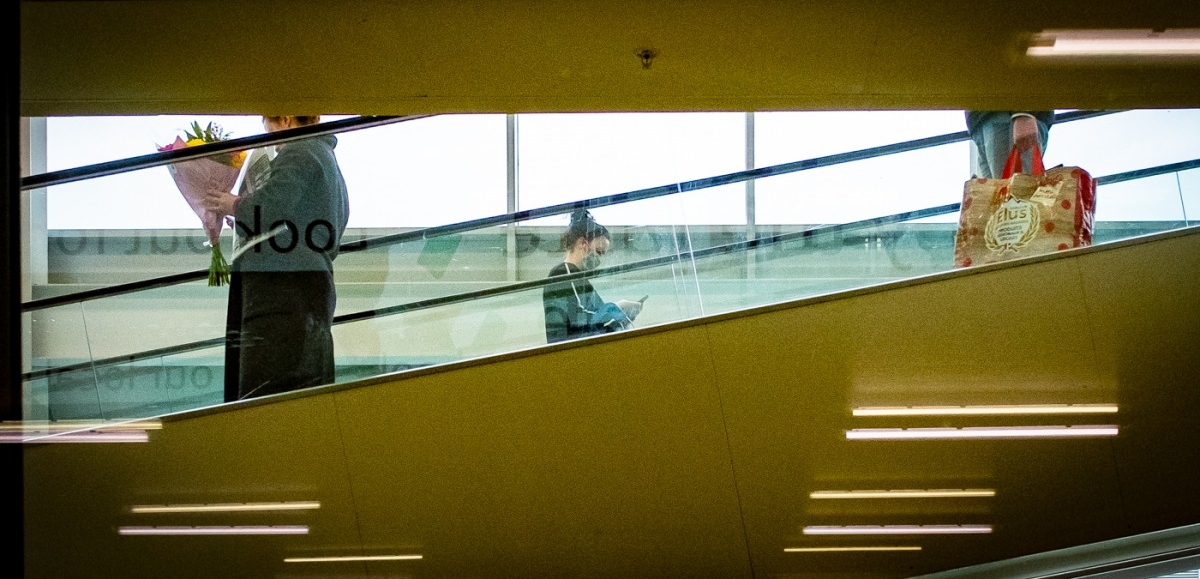Introduction
There are still many unresolved questions regarding the pathogenesis of this disease and especially the reasons underlying the extremely different clinical course, ranging from asymptomatic forms to severe manifestations, including the Acute Respiratory Distress Syndrome (ARDS). SARS-CoV-2 showed phylogenetic similarities to both SARS-CoV and MERS-CoV viruses, and some of the clinical features are shared between COVID-19 and previously identified beta-coronavirus infections. Available evidence indicate[s] that the so called “cytokine storm” an uncontrolled over-production of soluble markers of inflammation which, in turn, sustain an aberrant systemic inflammatory response, is a major [factor]responsible for the occurrence of ARDS.
Francesca Coperchinia, Luca Chiovatoab, Laura Croceab, Flavia Magriab, Mario Rotondi, ‘The cytokine storm in COVID-19: ‘An overview of the involvement of the chemokine/chemokine-receptor system’ (2020)[i]
For the first time in the post-war history of epidemics, there is a reversal of which countries are most heavily affected by a disease pandemic. By early May, 2020, more than 90% of all reported deaths from coronavirus disease 2019 (COVID-19) have been in the world’s richest countries; if China, Brazil, and Iran are included in this group, then that number rises to 96%.
Richard Cash and Vikram Patel, ‘Has COVID-19 subverted global health?’ (2020)[ii]
The evidence of Hitler’s as well as Stalin’s dictatorship points clearly to the fact that isolation of atomized individuals provides not only the mass basis for totalitarian rule, but is carried through to the top of the whole structure.
Hannah Arendt, The Origins of Totalitarianism (1951).
All this hate and violence [in the world]is being facilitated by a handful of internet companies that amount to the greatest propaganda machine in history.[iii]
Sacha Baron Cohen, speech, (2019)
Comment is free, but facts are sacred.[iv]
John Scott, editor of The Guardian, (1921)
In March, 2020 a simple moral calculus seized Western consciousness. Prompted by grim epidemiological assessments, and distressing accounts from emergency doctors in Northern Italy, a call to #flattenthecurve resounded across social media. The global force of hashtag activism led millions to renounce meeting friends and family in an extraordinary display of solidarity with vulnerable older people.
Twitter, which had previously styled itself ‘the free speech-wing of the free-speech party’[v], allowing all manner of unmoderated content to appear on controversial subjects such as climate change – as well as hate speech from President Donald Trump – abruptly changed policy on March 16th saying it would be:
Broadening our definition of harm to address content that goes directly against guidance from authoritative sources of global and local public health information. Rather than reports, we will enforce this in close coordination with trusted partners, including public health authorities and governments, and continue to use and consult with information from those sources when reviewing content.[vi]
Problematically, however, there is no canonical response to the global pandemic and significant debate has occurred between authoritative sources, as different governments pursue varied policies, with mixed results. This has created potential for national authorities to impugn or disqualify reasonable criticism by grafting health warnings on accounts at variance with a particular government’s guidance, or wider political objectives.
Twitter has not acted alone, Google has taken unprecedented steps to erase material that violates ‘Community Guidelines’: ‘including content that explicitly disputes the efficacy of global or local health authority recommended guidance on social distancing that may lead others to act against that guidance.’[vii]
Typically, Facebook adopted a laissez faire approach, although users who had read, watched or shared ‘false’ coronavirus content received a pop-up alert urging them to go the World Health Organisation’s website.[viii]
Whatever one’s view on the importance of social distancing, our readers may recall Ronald Dworkin’s pronouncement that ‘free speech is a condition of legitimate government.’ He argues that the universality of speech as a mode of rational discourse and scientific inquiry could act as truth-seeking counterweight to mass hysteria, negating unreason and prejudice.[ix]
Moreover, Stephen Sedley, the great English judge, called freedom of expression ‘the lifeblood of democracy;[x] or as George Orwell put it in the introduction to Animal Farm (1945): ‘If liberty means anything at all, it means the right to tell people what they do not want to hear.’
Accepting Covid-19 represents an extraordinary challenge requiring a concerted response, censorship by Big Data in such a blanket form, including of recognised academic authorities, surely only lends credence to conspiracy theories, fomented by the far-right in particular. Disregard for freedom of expression casts doubt over the integrity of scientific inquiry and inhibits rational debate.

Reappraisal
The English-speaking world was led to believe in early March that Covid-19 had a mortality rate of between 2% and 3% [xi], and that its spread would be exponential, with a reproductive (R) value of 3 (i.e. one person would infect another three), compared to an R value of 1.28 for seasonal influenza.[xii] Moreover, based on Lombardy’s experience, it seemed the death toll would include hundreds or even thousands of health service workers tending to the sick.
As the weeks passed the assessment of the mortality rate was scaled back to 1.4%,[xiii] but by then the virus seemed to be moving through Europe like a forest fire at the height of summer. Soon the number of daily mortalities from the disease was dominating news headlines.
Insofar as possible, most reasonable citizens abided by the popular injunction to #staythefuckathome, entrusting governments with emergency powers to guard against errant behaviour.
As time passed, however, we learnt that early projections on the infection fatality rate seem to have been significantly wide of the mark. Lone Simonsen professor of population health sciences at Roskilde University in Denmark recently said she expected a infection fatality rate ‘possibly as low as 0.2% or 0.3%’, while Professor Emeritus at the Karolinska Institute in Stockholm Professor Johan Giesecke has suggested an even lower figure of 0.1%.[xiv] The U.S. Centre for Disease Control’s best estimate implies a COVID-19 infection fatality rate below 0.3%.[xv]
Sunetra Gupta, Professor of Theoretical Epidemiology at the University of Oxford has gone lower still estimating an infection fatality rate of between 0.1% and 0.01%.[xvi] She bases this on an assumption the virus has been in circulation far longer than initially assumed, an argument gaining traction, with satellite data suggesting the pandemic hit Wuhan in China a far back as October,[xvii] while France’s ‘first known case’ was in December.[xviii] In truth, however, the infection fatality rate appears to depend hugely on the nature of any society, and not simply its age profile, for reasons to be discussed.
An aggravated perception of danger is also likely to have occurred through media reports juxtaposing confirmed cases, with mortalities. Thus The Guardian reported on May 16th that, ‘According to the Johns Hopkins University tracker there are 4,531,811 confirmed cases worldwide. The number of people who have lost their lives is 307,001 according to official tolls, but the true number is likely to be much higher.’[xix]
On a cursory examination, one might assume a infection fatality rate of 6-7%, or “much higher”. Little wonder then that people have been jumping out of the way of one another on footpaths.
This infection fatality rate may well prove to be considerably higher than a seasonal flu mortality rate of 0.04%, but it is instructive that during one such outbreak in 2017-2018 that there were 61,000 influenza-associated deaths in the United States alone.[xx] Yet these preventable deaths hardly registered on the national consciousness, unlike like the victims of Covid-19.
100,000 people have now died in the U.S. from the coronavirus.
We highlighted 1,000 of them this week — their names and their stories. https://t.co/PILnDapjLI
— The New York Times (@nytimes) May 27, 2020
As Simon Jenkins, one of the few Guardian commentators who has kept the pandemic in perspective put it: ‘When hysteria is rife, we might try some history.’[xxi]
Epidemiological Modelling
Based on a infection fatality rate of 0.9%, in late March an Imperial College team led by Professor Neil Ferguson predicted that unless stern measures were taken there would be half-a-million deaths in the U.K. and over two million in the U.S.:[xxii]
But as early as March Nobel-prize winning bio-physicist Michael Levitt was identifying common sense flaws in prominent epidemiological modelling, saying:
In exponential growth models, you assume that new people can be infected every day, because you keep meeting new people. But, if you consider your own social circle, you basically meet the same people every day …. You can meet new people on public transportation, for example; but even on the bus, after sometime most passengers will either be infected or immune.[xxiii]
Levitt assumed the R rate would decline once reasonable steps were taken, such as social distancing and removing the possibility of close confinement in pubs, at sporting events and other so-called ‘super-spreader’ events. [xxiv] In March Levitt told Ferguson that he had over-estimated the potential death toll by ‘10 or 12 times.’[xxv]
Moreover, given only one branch seems to have closed its doors over the course of the outbreak in the U.K.,[xxvi] it appears early panic about contagions occurring in supermarkets, which is still leading to people disinfecting their shopping, were largely unfounded.[xxvii]

Mistaking Flu for Coronavirus
Mortalities from novel flu viruses tend to be among individuals under the age of forty. This is because ‘emergent viruses resembled those that had circulated previously within the lifespan of then-living people.’[xxviii] This means older peoples’ immune systems are generally better equipped with antibodies to fight off such novel infections.
As yet it is still unclear whether exposure to other coronaviruses, including the ‘common cold’, provide greater immunity to Covid-19, although one recent paper does suggest, ‘cross-reactive T cell recognition between circulating “common cold” coronaviruses and SARS-CoV-2.’[xxix]
It remains to be seen whether the death toll from Covid-19 will scale the heights of the ‘Asian’ Flu (H2S2) of 1957, (with a an estimated median R value of 1.65[xxx]) which led to 1 million deaths around the world, including 80,000 in the United States; or the ‘Hong Kong’ flu (H3N2) of 1968 (with an estimated median R value of 1.80) that was responsible for between 1 million and 4 million[xxxi]; let alone the Spanish Influenza (H1N1) outbreak of 1918 that carried off an astonishing fifty million people[xxxii], (with an estimated median R value of 3 [xxxiii]), most of whom were in the prime of their lives.
Hugh Pennington emeritus professor of bacteriology at the University of Aberdeen recently took an optimistic view on the prospect of avoiding a dreaded ‘second wave’ of infections:
The idea of a second wave comes almost entirely from the 1918 Spanish flu pandemic. The first wave occurred in June and July and the second in October and November. The first was mild, the second was lethal. It is yet to be explained why the infections occurred in waves and why the virus faded away after the first and then returned.
‘Flu is very different from Covid-19’ Pennington says, ‘Although both are commonly spread by the respiratory route, and both have infected prime ministers, the more we learn about Covid-19, the less its biology and epidemiology resemble that of flu.’
He further contends, ‘In the absence of controls, flu has an R rate of seven [presumably he means at the height of a pandemic]; Covid-19’s is between two and three [lower seemingly than the earlier assessment]. And far more than with flu, Covid-19 cases have very commonly occurred in clusters.’
Conflation with flu modelling may also be discounting wider “imperviousness” than assumed. UCL Professor Karl Friston famously drew on astrophysics to explain Germany’s low infection rate relative to the U.K.:
it looks as if the low German fatality rate is not due to their superior testing capacity, but rather to the fact that the average German is less likely to get infected and die than the average Brit. Why? There are various possible explanations, but one that looks increasingly likely is that Germany has more immunological “dark matter” – people who are impervious to infection, perhaps because they are geographically isolated or have some kind of natural resistance. This is like dark matter in the universe: we can’t see it, but we know it must be there to account for what we can see.[xxxiv]
The curious case of Japan also indicates that certain societies – or nations – are considerably more impervious than others. As the country in the world with the oldest population in the world, and with heavy urban densities, one would have expected the virus to have had a devastating impact there, yet:
No restrictions were placed on residents’ movements, and businesses from restaurants to hairdressers stayed open. No high-tech apps that tracked people’s movements were deployed. The country doesn’t have a center for disease control. And even as nations were exhorted to “test, test, test,” Japan has tested just 0.2% of its population — one of the lowest rates among developed countries.[xxxv]
Japan’s population of over 125 million experienced less than 1,000 deaths from Covid-19.
Nonetheless, apart from underlying exacerbating factors such as population density and an ageing population – relative to its Irish neighbour at least[xxxvi] – as well as a high obesity rate,[xxxvii] the U.K.’s high death toll can, at least in part, be attributed to Boris Johnson’s government’s ‘sleepwalking’ through the beginning of the crisis,[xxxviii] almost wlilfully ignoring the threat, and putting out highly inappropriate messages, including on shaking hands.
Nevertheless, the suggestion aired on an episode of Channel 4’s Dispatches that 13,000 deaths would have been avoided if a lockdown or stay-at-home order had been introduced at the beginning of March came from a health analyst, George Batchelor, rather than a recognised academic authority, and should be treated with caution.
Revealingly, in Hong Kong where 90% of cases were contact traced, ‘the number of individual secondary cases was significantly higher within social settings such as bars and restaurants compared to family or work exposures.’ In time it may be determined that Boris Johnson’s hesitation in closing pubs was his most costly mistake.[xxxix]

QALY
In Italy, where average life expectancy is approximately eighty-three-years-of-age, the average age of mortality from Covid-19 was approximately eighty years-of-age.[xl] This figure includes over one hundred health care workers.[xli] Many of these premature deaths occurred in the clusters that Hugh Pennington refers to – perhaps from heavy ‘viral load’[xlii] encountered in poorly ventilated hospitals and care home facilities.
The overall loss of life years from the Covid-19 pandemic may prove minimal, however, compared to novel flu viruses, which have mainly afflicted the young over the past century.
This is not to diminish the value of any life, but public health interventions are conventionally given a comparative value (QALY – Quality-adjusted Life Year), ‘which is routinely used as a summary measure of health outcome for economic evaluation, which incorporates the impact on both the quantity and quality of life.’ The financial cost of any intervention, including a lockdown or stay-at-home order, must be measured against its impact on both quantity and quality of life.
There are now serious question marks around the efficacy of lockdowns. Using ‘Bayesian’ modelling a team led by Professor Simon Wood in Bristol University supports Michael Levin’s assessment that early epidemiological models were flawed, suggesting that ‘the number of new daily infections in the UK peaked some days before lock down was implemented, although it does not completely rule out a slightly later peak.’[xliii]
Furthermore, a quasi-experimental study carried out by the University of East Anglia concluded that stay at home orders, or lockdowns were ‘not associated with any independent additional impact.’[xlvi] Another recent study in Nature, however, offers a different assessment, but includes data from China, which may be unreliable, and where the extremity of the measures are incompatible with democratic norms. Lockdown advocates also generally assume a higher infection fatality rate than recent reappraisals.
During lockdown, across Europe and beyond, cases and deaths occured in clusters: within enclosed spaces such as care homes,[xliv] hospitals and meat packing plants,[xlv] but also households. Hashtag activism informed the public in most Western countries about the pandemic, who were refraining from unnecessary social encounters, and travel, already.
This may be why the Norwegian Institute for Public Health has recently called for the government to avoid such a far-reaching measure if the country is hit by a second wave.[xlvii] Norwegian Prime Minister Erna Solberg also bravely admitted before a national television audience: ‘I probably took many of the decisions out of fear.’[xlviii]
The adverse consequences of lockdowns – including a spike in domestic violence[xlix], its effect on children[l] and unprecedented economic impacts, especially on SMEs and casual workers, also cannot be discounted.
Worst of all has been the effect of draconian lockdowns on developing countries, such as India. Vikram Patel and Richard Cash (both of Harvard University) wrote in The Lancet:
we suggest that countries must let people get on with their lives—to work, earn money, and put food on the table. Let shop keepers open and sell their wares and provide services. Let construction workers return to building sites. Allow farmers to harvest their crops and to transport them to be sold on the open market. Allow health workers to do their daily work as before, with sensible precautions such as use of gloves and masks to minimise the risk of exposure to the virus. And allow the average citizen to travel freely with restrictions only applied to clusters where lockdowns are necessary. Livelihoods are an imperative for saving lives. Some will say such an approach, which runs the risk of spreading disease, implies that the lives of poor people are not as valuable as those in wealthy countries. Nothing could be further from the truth. The policies of widespread lockdowns and a focus on high-technology health care might unintentionally lead to even more sickness and death, disproportionately affecting the poor.
These arguments also apply in wealthier societies, as many among the poor do not have the privilege of being able to work from home, and may participate in the black economy. Government supports are generally inadequate and do not last indefinitely.
The preceding points are not a definitive argument in favour of Sweden’s policies during the pandemic, faults in which have been acknowledged by its chief architect Anders Tegnell. But it is important for policy makers to recognise the cost of lockdowns, especially for extended periods. Also, importantly, handing discretionary powers to police forces in such circumstances establishes a dangerous precedent.

Fatalism
In solitude we have been consumed by a story that feeds into pressing contemporary dilemmas, including on the role of scientific expertise. This can be situated within a long-standing division in Western culture between rationality and intuition, evident during World War II in the conflict between Communism and Fascism.
As Martin Glover put it:
Stalin, as a version of the Enlightenment idea of redesigning society on a rational basis, shared the catastrophic implications of carrying out such a project without moral or human restraints. Nazism was against the universalism of Kant and other Enlightenment thinkers. It was tribal: not rights of man, but the German right to lebensraum … Stalinism shows what can happen when Enlightenment ideas are applied wrongly, Nazism shows what can happen when unenlightened ideas are applied rightly.[liii]
A form of this has spilled into the so-called Culture Wars, including identity politics, that have raged in particular since the 1990s, culminating in Brexit and President Trump, but it is also perhaps evident at a psychological level within most of our personalities. Importantly, excesses of rationality can be as destructive as Fascism, as we saw under the guise of Communism.
Responses to the pandemic have also been conditioned by prior faith in, or suspicion of, the Western medical system – including from so-called anti-vaxxers – with Populist right-wing politicians dismissing concerns about a bad flu,[liv] and offering to take it on the chin.[lv] In contrast, some on the left seem to have viewed the crisis as an opportunity to enlarge the role of the State, leading to countervailing scientific authorities to be dismissed on ideological grounds.
There may also have been a tendency, evident in The Guardian, The New York Times and elsewhere, to heighten outrage against the administrations of Donald Trump in the U.S. and Boris Johnson in the U.K. by front-loading mortality statistics.
Another explanation for the extreme response of individuals who consented to prolonged periods of self-isolation – including those of an age profile suggesting they had little to worry about themselves – is an evident fatalism haunting a globally dominant capitalist system. As David Graeber put it:
Capitalism is a system that enshrines the gambler as an essential part of its operation, in a way that no other has, yet at the same time, capitalism seems to be uniquely incapable of conceiving of its own eternity. Could these two facts be linked?[lvi]
An understandable fatalism in the face of climate change and mass extinctions, perhaps spilled into reactions to this pandemic, with self-isolation a form of repentance.
Moreover, the idea of plague as representing divine retribution may operate at an unconscious level. Apart from Biblical episodes such as that visited on Egypt, it is found in ancient epics such as Homer’s Iliad. Thus, when King Agamemnon makes a war prize of Chryseis the daughter of Chryses a priest of Apollo, the sun god takes revenge by unleashing poison-tipped arrows against the Greek army, many of whom succumb to plague.
More recently, films, such as Outbreak (1995) starring and Dustin Hoffman, and novels such as Jose Saramago’s Blindness (1997), have played on these fears.
What was Covid-19 but God or Gaia punishing us for our consumerist sins?

Guardian Angle
The so-called hashtag activism that prompted civil society to take preventive measures against Covid-19, and which led to many governments to adopt draconian suppression policies, including lockdowns, has been led in the U.K. and Ireland in particular by The Guardian newspaper
The free digital site with an estimated 42 million monthly visitors[lvii] devoted unrelenting rolling coverage to Covid-19, emphasising the simple moral calculus with a banner across its home page. This has been to the almost complete exclusion of all other content for the months of March, April and May.
The Guardian’s loss of proportion, and nuance, has been particularly damaging as it is the most trusted newspaper brand in the U.K., including, importantly, among readers aged 18 to 29.[lviii] This may be traced to its position as a global news provider of free content dependent on maintaining an enormous click rate to derive a profit.
In a recent memoir the former editor Alan Rusbridger describes how: ‘Only by going for reach could you make up for … the ‘frightening disparity’ between the yields in traditional and online media.’[lix]
He reveals that by mid-2018:
The Guardian was reaching 150 million browsers each month and a billion page views per month. There was no talk of paywalls: even so, reader revenues had overtaken advertising. And digital revenues – at £109 million – had, for the first time, overtaken the £107.5 million of print revenues. The paper was confidently talking of hitting break-even in 2018/19.[lx]
The difficulty is that once you have reached such a high threshold, and have taken on hundreds of staff, you have to keep that readership transfixed.
The Guardian’s increasingly monopolistic position has come at the expense of journalistic diversity, as smaller publishers cannot compete with its reach. Moreover the perceived reliability of its reporting creates a difficulty for competitors wishing to mount a pay wall without significant marketing investment. In such a squeezed field alternatives are increasingly the preserve of billionaires, such as Rupert Murdoch, the Barclay Brothers, Mike Bloomberg and Jeff Bezos. This is having a corrosive effect on democracy, as many of these publications are ideologically tainted, and support vested interests.
Underling all this, the number of American journalists fell from 60,000 in 1992 to 40,000 in 2009,[lxi] This pattern has been seen all around the world as revenues diminish and workloads increase. In the U.K. Cardiff University researchers recently conducted an analysis of 2,000 U.K. news stories. They discovered the average Fleet Street journalist was filing three times as much as in 1985. Or, to put it another way, journalists now have only one-third of the time they used to have to do their jobs.[lxii]
This results in what Nick Davies has described as ‘churnalism’, whereby most journalists are passive processors of ‘unchecked, second-hand material, much of it contrived by PR to serve a political or commercial interest.’[lxiii]

Hyperbolic Coverage
An exhaustive assessment of Guardian coverage is beyond the scope of this article, but two examples of their unsatisfactory reporting throughout this crisis should hopefully suffice.
On Friday, May 15th an article ran under the headline: ‘Dying to go out to eat? Here’s how viruses like Covid-19 spread in a restaurant’.[lxiv] It referred to a video experiment simulating ‘how quickly germs can be spread across a variety of surfaces in environments such as restaurant buffets and cruise ships.’
To begin with, one guest of 10 at a restaurant buffet is shown with the substance on his hands meant as a stand-in for the coronavirus. Over the course of a typical dining period, the rest of the guests behave in predictable fashion, selecting utensils from serving stations, enjoying their food, checking their phones and so on.
At the end of the experiment the black light is turned on and the substance is revealed to be smeared everywhere: plates, foodstuff, utensils and even all over some of the guests’ faces.
A few paragraphs into the article, however, a second experiment demonstrates the positive effect of improved hygiene techniques, after ‘the “infected” person and the other diners take the simple precaution of washing their hands, and utensils and other implements are cleaned or replaced.
The first difficulty with the study itself is that it is conducted in a canteen-style restaurant – a worst case scenario where cutlery and plates are exposed to many hands. But the most obvious problem is that the headline feeds into a narrative of fear and paranoia, to the detriment of anyone struggling to keep a restaurant afloat.
Another headline from May 26th paints a lurid picture: ‘Global report: ‘disaster’ looms for millions of children as WHO warns of second peak’.[lxv] Yet it soon apparent that the “disastrous” consequences for children, who are more likely to die after being struck by lightening than from a dose of Covid-19 and barely register as mortalities from the virus,[lxvi] is from increased vulnerability to forced labour and underage marriage. The “second peak” warned of by the WHO in the headline is a non-sequitur that has nothing to do with any elevated danger to children,
Choice of headline is crucial as many browsers simply scan news sites. A 2010 Pew analysis found that the average visitor spent only 3 minutes 4 seconds per session on the typical news site. That compared with a 2005 survey showing about half of U.S. newspaper readers spent more than thirty minutes reading a daily paper.[lxvii]

What has gone wrong?
Clay Shirky writes in Here Comes Everybody (2008):
When we change the way we communicate, we change society. The tools that a society uses to create and maintain itself are as central to human life as a hive is to a bee … The hive is a social device, a piece of bee information technology that provides a platform, literally, for the communication and co-ordination that keep the colony viable. Individual bees can’t be understood separately from the colony or from their shared, co-created environment. So it is with human networks.
He asserts that the ‘Web didn’t introduce a new competitor into the old eco-system, as USA Today had done. The Web created a new ecosystem.’[lxviii]
The Guardian embraced a form of ‘collaboration media’, which companies and politicians rapidly learned to respect, and fear. Former editor Alan Rusbridger recognised that ‘social media would disrupt conventional politics and transform the speed at which it happened.’ He acknowledges, however, that, ‘It was, obviously, not necessarily good at complexity – though it could link to the complexity. It could be frustratingly reductive. It didn’t patiently and painstakingly report, in the way a good new organisation still did. It was to some extent parasitical.’[lxix]
Rusbridger also quotes former Sunday Times editor Harold Evans to the effect that ‘an investigation only really began to count once the readers and even the journalists were bored with it.’[lxx] But in an all-consuming demand for clicks, and in the frenzied political era of Trump and Brexit, balance has been lost. Lacking detached and independent journalism we have walked into a prolonged social experiment that will take considerable unravelling.

A New Hashtag
On May 25th, 2020, George Perry Floyd, a 46-year-old black man was killed when a white Minneapolis police officer kneeled on his neck during an arrest for passing a counterfeit $20 bill. His death brought a wave of demonstrations in major U.S. cities that have spread to other countries, with many protestors donning masks as protection against the virus.
The hashtag generation has discovered another noble cause in #blacklivesmatter – to be clear #flattenthecurve was certainly well motivated – but let us hope balance and nuance is not lost, and that a deadening conformity does not ensue in debates over race, poverty and the ambit of the state.
The extraordinary scenes witnessed around the world could also be interpreted as a proxy for societies throwing off the heavy knee of lockdowns, containing a basic human impulse to interact with one another, honouring the exuberant Dionysian element in our nature that had been contained by Apollonian rationality.
Fyodor Dostoyevsky’s unnamed narrator from Notes from the Underground (1864) seems to envisage the poles of this division. First, he describes the archetypal rationalist that ‘scientifically’ predicts all outcomes in society:
All human actions will then of course be calculated, mathematically, like logarithm tables up to 108,000, and recorded in a calendar; or even better, well-intentioned publications will then appear, like the present-day encyclopaedic dictionaries, in which everything will be so precisely calculated and recorded that there will no longer be deliberate acts or adventures in the world.
But he suggests this would create a reaction:
I, for example, wouldn’t be at all surprised if, in the midst of all this reasonableness that is to come, suddenly and quite unaccountably some gentleman with an ignoble, or rather a reactionary and mocking physiognomy were to appear and, arms akimbo, say to us all: “Now, gentlemen, what about giving all this reasonableness a good kick with the sole purpose of sending all those logarithms to hell for a while so we can live for a while in accordance with our own stupid will![lxxi]
Thus an excess of rationality may create conditions for profound irrationality, or even absurdity in the case of the utilitarian philosopher Jeremy Bentham’s felicitous calculus.

What Next?
We still have to address the public health crisis of a pandemic, requiring substantial reforms in healthcare, architecture and spatial design to contend with a disease that should not be treated as a flu pandemic.
Once unsustainable lockdowns ease, Western societies with susceptible populations must adapt to life with the virus. A policy of elimination is unrealistic and even cruel, unless we essentially exclude entrants from the outside world, as in New Zealand, or become a police state like China.
Like a thief in the night, Covid-19 discovered weaknesses in the wealthiest countries in the world that also happen to be among the most unequal. Most obviously it found its way to older individuals, many weakened by increasingly poor diets and sedentarism that is behind a pernicious obesity pandemic.
It has already been argued that life expectancy is declining in the United States,[lxxii] after two centuries during which it climbed steadily. Our lives, and diets, are simply unsustainable, and perhaps Covid-19 is nature’s (God or Gaia’s?) way of telling us so. The question is whether we are prepared to adopt the environmental approaches to lower the risk of further zoonotic episodes that lead to viruses.
On a more basic level we need to retrofit buildings – embracing the idea of a healthy home[lxxiii] or workplace that diminishes viral load – and redesign transport systems to prevent contagions. As a priority we require hospital design for better infection control as ‘Building ventilation, whether natural or mechanical serves to dilute droplets nuclei in the air and is the single most important engineering control in the prevention of transmission of airborne infections.’[lxxiv]
Yet surely we cannot lose the joy of social interaction, or turn romance into an online transaction controlled by algorithms. Great gatherings of people are still the lifeblood of politics, the arts and sport. For these to become historical curiosities, outlawed indefinitely as “super-spreader” events, would be lamentable.
We have to shake the trauma off somehow, or dance it off perhaps. Above all children cannot be confounded by the fear of their parents and other adults, and have natural inclinations to play frustrated indefinitely. Let us restore the friendly hug or kiss in time. We have to accept a measure of death in exchange for the expression of lives we all value. Society cannot be broken by social distancing.
Another vital lessons from this pandemic is that we require greater freedom of expression and media diversity. It is unacceptable for unaccountable corporate bodies such as Twitter, Google and Facebook to control narratives indefinitely. In truth, people may have to get used to paying for journalism once again, or at least acknowledge that without payment you are (mostly) getting clickbait.
In writing ‘the first draft of history’ on Covid-19, The Guardian may be excused for making errors, but nor should the publication be viewed as a neutral conduit of facts either, unmotivated by profit, and without a seat at the highest tables of power. As Rusbridger reveals in response to the Edward Snowden and Julian Assange accounts: ‘I once remarked to a senior intelligence figure that the British and American governments, instead of condemning our role, should go down on their knees in thanks that we were there as such a careful filter.’[lxxv]
All Images © Daniele Idini
[i] Francesca Coperchinia, Luca Chiovatoab, Laura Croceab, Flavia Magriab, Mario Rotondi, ‘The cytokine storm in COVID-19: An overview of the involvement of the chemokine/chemokine-receptor system’ (2020)https://www.sciencedirect.com/science/article/pii/S1359610120300927
[ii] Richard Cash and Vikram Patel, ‘Has COVID-19 subverted global health?’ May 5th, 2020, The Lancet. https://www.thelancet.com/journals/lancet/article/PIIS0140-6736(20)31089-8/fulltext
[iii] Untitled, ‘’Greatest propaganda machine in history’: Sacha Baron Cohen slams Facebook, other social media companies’, NBC November 22nd, 2020, https://www.nbcnews.com/tech/social-media/greatest-propaganda-machine-history-sacha-baron-cohen-slams-facebook-other-n1089471
[iv] Simon Rogers, ‘Data journalism in action: what is Facts are Sacred about?’ April 4th, 2013, https://www.theguardian.com/news/datablog/2013/apr/04/data-journalism-facts-are-sacred
[v] Josh Halliday, ‘Twitter’s Tony Wang: ‘We are the free speech wing of the free speech party’’ March 22nd, 2012, https://www.theguardian.com/media/2012/mar/22/twitter-tony-wang-free-speech
[vi] Vijaya Gadde and Matt Derella, ‘An update on our continuity strategy during COVID-19’, https://blog.twitter.com/en_us/topics/company/2020/An-update-on-our-continuity-strategy-during-COVID-19.html
[vii] Jon Levine, ‘YouTube censors epidemiologist Knut Wittkowski for opposing lockdown’, New York Post, May 16th, 2020, https://nypost.com/2020/05/16/youtube-censors-epidemiologist-knut-wittkowski-for-opposing-lockdown/
[viii] Untitled, ‘Coronavirus: Facebook alters virus action after damning misinformation report’, BBC, April 3rd, 2020, https://www.bbc.com/news/technology-52309094
[ix] Ronald Dworkin ‘The Right to Ridicule’, March 23rd, 2006, The New York Review of Books, https://www.nybooks.com/articles/2006/03/23/the-right-to-ridicule/, accessed 26/4/19.
[x] Stephen Sedley, Law and the Whirligig of Time, London, Hart Publishing, 2018.
[xi] Sharon Begey, ‘Lower death rate estimates for coronavirus, especially for non-elderly, provide glimmer of hope’, March 16th, Stat, https://www.statnews.com/2020/03/16/lower-coronavirus-death-rate-estimates/
[xii] Matthew Biggerstaff, Simon Cauchemez, Carrie Reed, Manoj Gambhir & Lyn Finelli, ‘Estimates of the reproduction number for seasonal, pandemic, and zoonotic influenza: a systematic review of the literature’ BMC Infectious Diseases, September, 2014, https://bmcinfectdis.biomedcentral.com/articles/10.1186/1471-2334-14-480
[xiii] Ibid, Sharon Begley, Ihttps://www.statnews.com/2020/03/16/lower-coronavirus-death-rate-estimates/
[xiv] Justin Fox, ‘The Coronavirus is worse than the flu, bro’ Bloomberg, April 24th, 2020 https://www.bloomberg.com/opinion/articles/2020-04-24/is-coronavirus-worse-than-the-flu-blood-studies-say-yes-by-far
[xv] Jacob Sullum, ‘The CDC’s New ‘Best Estimate’ Implies a COVID-19 Infection Fatality Rate Below 0.3%’, Reason, 24th of May, 2020, https://reason.com/2020/05/24/the-cdcs-new-best-estimate-implies-a-covid-19-infection-fatality-rate-below-0-3/
[xvi] Freddie Sayers, ‘ Sunetra Gupta: Covid-19 is on the way out’ Unherd, May 21st, 2020, https://unherd.com/2020/05/oxford-doubles-down-sunetra-gupta-interview/
[xvii] Kaitlyn Folmer and Josh Margolin, ‘Satellite data suggests coronavirus may have hit China earlier: Researchers’, ABC News, June 8th, 2020, https://abcnews.go.com/International/satellite-data-suggests-coronavirus-hit-china-earlier-researchers/story?id=71123270
[xviii] Untitled, ‘Coronavirus: France’s first known case ‘was in December’, BBC, May 5th, 2020, https://www.bbc.com/news/world-europe-52526554
[xix] Guardian staff and agencies, ‘Global report: US House passes $3tn stimulus as experts track Covid-19-linked syndrome’, The Guardian, May 16th, 2020, https://www.theguardian.com/world/2020/may/16/global-report-democrats-push-for-3tn-stimulus-as-experts-track-covid-linked-syndrome?fbclid=IwAR1tpHpfNr_3zdSY68Yw6BUpUfAM6S56Dke8VANSk21Fhx2OQZO9pRDzFug
[xx] Center for Disease Control, ‘Estimated Influenza Illnesses, Medical visits, Hospitalizations, and Deaths in the United States — 2017–2018 influenza season’, https://www.cdc.gov/flu/about/burden/2017-2018.htm
[xxi] Simon Jenkins, ‘Why I’m taking the coronavirus hype with a pinch of salt’, The Guardian, March 6th, 2020, https://www.theguardian.com/commentisfree/2020/mar/06/coronavirus-hype-crisis-predictions-sars-swine-flu-panics
[xxii] David Adam, ‘Special report: The simulations driving the world’s response to COVID-19’, Nature, April 3rd, 2020, https://www.nature.com/articles/d41586-020-01003-6
[xxiii] Graig Graziosi, ‘Coronavirus: Nobel Prize winner predicts US will get through crisis sooner than expected’, The Independent, March 24th, 2020, https://www.independent.co.uk/news/world/americas/coronavirus-michael-levitt-china-italy-a9422986.html
[xxiv] Richard A. Stein, ‘Super-spreaders in infectious diseases’, International Journal of Infectious Diseases, April, 2011, https://www.sciencedirect.com/science/article/pii/S1201971211000245
[xxv] Tom Morgan, ‘ Lockdown saved no lives and may have cost them, Nobel Prize winner believes’, 23rd of May, 2020, https://www.telegraph.co.uk/news/2020/05/23/lockdown-saved-no-lives-may-have-cost-nobel-prize-winner-believes/
[xxvi] Amelia Winn, ‘Lidl becomes first supermarket chain to CLOSE a UK store after staff catch coronavirus – but shoppers are told doors will reopen on Monday’, Daily Mail, May 3rd, 2020, https://www.dailymail.co.uk/news/article-8281995/Lidl-supermarket-chain-CLOSE-UK-store-staff-catch-coronavirus.html
[xxvii] Emily Holden, ‘Do you need to wash your groceries? And other advice for shopping safely’, The Guardian, April 2nd, 2020, https://www.theguardian.com/world/2020/apr/02/do-you-need-to-wash-your-groceries-and-other-advice-for-shopping-safely
[xxviii] Tom Reichert, Gerardo Chowell & Jonathan A McCullers, ‘The age distribution of mortality due to influenza: pandemic and peri-pandemic’ BMC Medicine, December 12th, 2012, https://bmcmedicine.biomedcentral.com/articles/10.1186/1741-7015-10-162
[xxix] Alba Grifoni, Daniela Weiskopf, Sydney I. Ramirez, Davey M. Smith, Shane Crotty, Alessandro Sette, Cell, ‘Targets of T Cell Responses to SARS-CoV-2 Coronavirus in Humans with COVID-19 Disease and Unexposed Individuals’ May 14th, 2020, https://www.cell.com/cell/fulltext/S0092-8674(20)30610-3
[xxx] Matthew Biggerstaff, Simon Cauchemez, Carrie Reed, Manoj Gambhir, and Lyn Finelli, ‘Estimates of the reproduction number for seasonal, pandemic, and zoonotic influenza: a systematic review of the literature’, BMC Infectious Diseases, September 4th, 2014, https://www.ncbi.nlm.nih.gov/pmc/articles/PMC4169819/
[xxxi] Mark Honigsbaum, ‘Revisiting the 1957 and 1968 influenza pandemics‘,The Lancet, May 25th, 2020, https://www.thelancet.com/journals/lancet/article/PIIS0140-6736(20)31201-0/fulltext
[xxxii] Center for Disease Control, ‘1918 Pandemic (H1N1 virus)’ https://www.cdc.gov/flu/pandemic-resources/1918-pandemic-h1n1.html
[xxxiii] Emilia Vynnycky, Amy Trindall, Punam Mangtani, ‘Estimates of the reproduction numbers of Spanish influenza using morbidity data’, International Journal of Epidemiology, May 17th, 2007, https://academic.oup.com/ije/article/36/4/881/667165
[xxxiv] Laura Spinney, ‘Covid-19 expert Karl Friston: ‘Germany may have more immunological “dark matter”’’ The Guardian, May 31st, 2020, https://www.theguardian.com/world/2020/may/31/covid-19-expert-karl-friston-germany-may-have-more-immunological-dark-matter
[xxxv] Lisa Dua and Grace Huang, ‘Did Japan Just Beat the Virus Without Lockdowns or Mass Testing?’ Bloomberg, May 22nd, 2020, https://www.bloomberg.com/news/articles/2020-05-22/did-japan-just-beat-the-virus-without-lockdowns-or-mass-testing
[xxxvi] Nicola Davis and Rory Carrol, ‘ Experts divided over comparison of UK and Ireland’s coronavirus records’, The Guardian, April 13th, 2020, https://www.theguardian.com/world/2020/apr/13/experts-divided-comparison-uk-ireland-coronavirus-record
[xxxvii] Untitled, ‘ Obesity crisis: The UK’s weight problem in seven charts’, Sky News, August 20th, 2019, https://news.sky.com/story/seven-charts-on-the-uks-obesity-problem-11583981
[xxxviii] Jonathan Calvert, George Arbuthnott and Jonathan Leake, ‘Coronavirus: 38 days when Britain sleepwalked into disaster’, The Sunday Times, April 19th, 2020, https://www.thetimes.co.uk/article/coronavirus-38-days-when-britain-sleepwalked-into-disaster-hq3b9tlgh
[xxxix] Untitled, ‘Coronavirus: Prime Minister Boris Johnson orders pubs, restaurants and gyms to close across the UK’ March 21st, 2020, Sky News, https://www.skysports.com/more-sports/other-sports/news/12040/11961096/coronavirus-prime-minister-boris-johnson-orders-pubs-restaurants-and-gyms-to-close-across-the-uk
[xl] ‘Coronavirus (COVID-19) deaths in Italy as of June 3, 2020, by age group’, Statista, https://www.statista.com/statistics/1105061/coronavirus-deaths-by-region-in-italy/
[xli] Untitled, ‘Italy says number of doctors killed by coronavirus passes 100’ France24, April 9th 2020, https://www.france24.com/en/20200409-italy-says-number-of-doctors-killed-by-coronavirus-passes-100
[xlii] Marta Gaglia and Seema Lakdawala, ‘What we do and do not know about COVID-19’s infectious dose and viral load’, The Conversation, April 14th, 2020, https://theconversation.com/what-we-do-and-do-not-know-about-covid-19s-infectious-dose-and-viral-load-135991
[xliii] Simon Wood et al, ‘UK Covid-19 infection peak may have fallen before lockdown, new analysis shows’, May 7th, Bristol University, May 7th, 2020, https://www.bristol.ac.uk/maths/news/2020/peak-lockdown.html?fbclid=IwAR2g2Mr0IudkXCnQo8leIdVBueq-fdkLNGk9lQjPYrrrO7GW2jfMT19Hg1Q
[xliv] Observer Reporters, ‘Across the world, figures reveal horrific toll of care home deaths’, The Guardian, May 16th, 2020, https://www.theguardian.com/world/2020/may/16/across-the-world-figures-reveal-horrific-covid-19-toll-of-care-home-deaths
[xlv] Megan Molteni, ‘Why Meatpacking Plants Have Become Covid-19 Hot Spots’, Wired, May 7th, 2020, https://www.wired.com/story/why-meatpacking-plants-have-become-covid-19-hot-spots/
[xlvi] Press Release, ‘New study reveals blueprint for getting out of Covid-19 lockdown’, May 6th, 2020, University of East Anglia https://www.uea.ac.uk/about/-/new-study-reveals-blueprint-for-getting-out-of-covid-19-lockdown
[xlvii] Untitled, ‘Norway could have controlled infection without lockdown’, The Local, May 22nd, 2020, https://www.thelocal.no/20200522/norway-could-have-controlled-infection-without-lockdown-health-chief?fbclid=IwAR1jJTUpQLXLgONVqWmLJHQ2-rd-FG7794lONTsaquGaw0DJmhIUEOqWLwk
[xlviii] Richard Orange, ‘Coronavirus: Norway wonders if it should have been more like Sweden’, The Telegraph, May 30th, 2020, https://www.telegraph.co.uk/news/2020/05/30/coronavirus-norway-wonders-should-have-like-sweden/
[xlix] Emma Graham-Harrison, Angela Giuffrida in Rome, Helena Smith in Athens and Liz Ford, ‘Lockdowns around the world bring rise in domestic violence’, The Guardian, March 28th, 2020, https://www.theguardian.com/society/2020/mar/28/lockdowns-world-rise-domestic-violence
[l] United Nations Sustainable Development Group, ‘Policy Brief: The Impact of COVID-19 on children’ April, 2020, https://unsdg.un.org/resources/policy-brief-impact-covid-19-children?fbclid=IwAR35l8582cnFgE_sWLurILYXeGWyg_PYSo8BApmmsarSwa_8_FQGzafxoI0
Johan Giesecke ‘The invisible pandemic’, The Lancet, May 5th, 2020, https://www.thelancet.com/journals/lancet/article/PIIS0140-6736(20)31035-7/fulltext
[lii] Jon Henley, ‘We should have done more, admits architect of Sweden’s Covid-19 strategy’, June 3rd, 2020, The Guardian, https://www.theguardian.com/world/2020/jun/03/architect-of-sweden-coronavirus-strategy-admits-too-many-died-anders-tegnell
[liii] Jonathan Glover, A Moral History of the Twentieth Century, Pimlico, London, 1999, p.394
[liv] Oliver Milman, ‘Seven of Donald Trump’s most misleading coronavirus claims’, The Guardian, March 30th, 2020, https://www.theguardian.com/us-news/2020/mar/28/trump-coronavirus-misleading-claims
[lv] Michelle Cottle, ‘Boris Johnson Should Have Taken His Own Medicine’, New York Times, March 27th, 2020, https://www.nytimes.com/2020/03/27/opinion/boris-johnson-coronavirus.html
[lvi] David Graeber, Debt – The First 5,000 Years, Melville, London, 2011, p.357
[lvii] ‘Top 15 Most Popular News Websites | February 2020’, http://www.ebizmba.com/articles/news-websites
[lviii] Jim Waterson, ‘Guardian named UK’s most trusted newspaper‘ The Guardian, October 31st, 2018, https://www.theguardian.com/media/2018/oct/31/guardian-rated-most-trusted-newspaper-brand-in-uk-study
[lix] Alan Rusbridger, The Remaking of Journalism and Why it Matters Now, Canongate, Edinburgh, 2018, p.145
[lx] Ibid, p.348
[lxi] Ibid, p.163
[lxii] Ibid, p.181
[lxiii] Ibid p.181
[lxiv] Luke O’Neill, ‘Dying to go out to eat? Here’s how viruses like Covid-19 spread in a restaurant’, The Guardian, May 15th, 2020, https://www.theguardian.com/world/2020/may/15/how-coronavirus-spreads-in-restaurant-video
[lxv] Guardian Staff and Agencies, ‘Global report: ‘disaster’ looms for millions of children as WHO warns of second peak’, The Guardian, May 26th, 2020, https://www.theguardian.com/world/2020/may/26/global-report-disaster-looms-for-millions-of-children-as-who-warns-of-second-peak
[lxvi] Statista, ‘Coronavirus (COVID-19) deaths in Italy as of June 3, 2020, by age group’ https://www.statista.com/statistics/1105061/coronavirus-deaths-by-region-in-italy/
[lxvii] Rusbridger, Ibid, p.275
[lxviii] Quoted in Rusbridger, Ibid, p.135
[lxix] Ibidp.143
[lxx] Ibid, p.161
[lxxi] Fyodor Dostoyevsky, Notes From the Underground, Alma Books, London, p.23-24
[lxxii] S. Jay Olshansky, Ph.D., Douglas J. Passaro, M.D., Ronald C. Hershow, M.D., Jennifer Layden, M.P.H., Bruce A. Carnes, Ph.D., Jacob Brody, M.D., Leonard Hayflick, Ph.D., Robert N. Butler, M.D., David B. Allison, Ph.D., and David S. Ludwig, M.D., Ph.D. ‘ A Potential Decline in Life Expectancy in the United States in the 21st Century’, The New England Journal of Medicine, March 17th, 2005, https://www.nejm.org/doi/full/10.1056/NEJMsr043743
[lxxiii] Kate Hamblet, ‘How to Design a Healthy Home ~ An Architect’s Blueprint’, HealthyGreenSavvy, January 5th, 2019, https://www.healthygreensavvy.com/healthy-home/
[lxxiv] Fatimah Lateef, ‘Hospital design for better infection control’, Journal of Emergencies, Shock and Trauma, 2009, https://www.ncbi.nlm.nih.gov/pmc/articles/PMC2776365/
[lxxv] Ibid, Rusbridger, p.250




